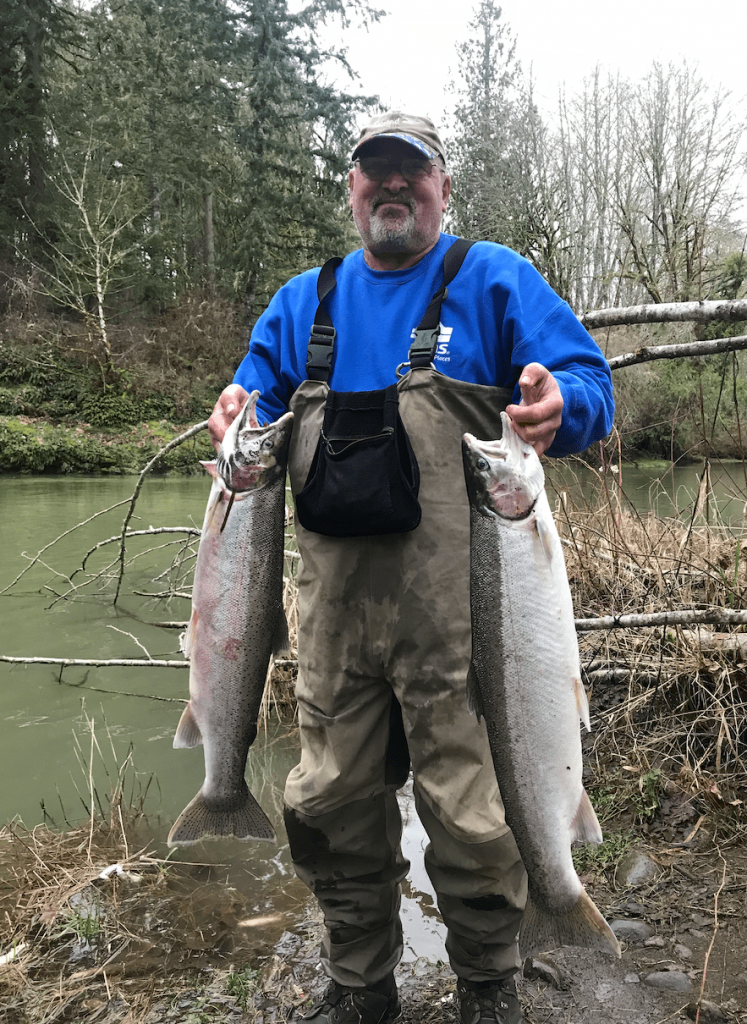
Another Day Of Waiting For Word On Washington Coast Winter Steelheading
**Editor’s note: This article was originally posted the evening of Dec. 7, 2020**
It won’t be till at least tomorrow – and maybe later in the week at this pace – before this winter’s major Washington Coast steelhead regulation changes are known.
A WDFW spokeswoman this evening tells Northwest Sportsman that details wouldn’t be finalized tonight and the issue will be taken up again in the morning, further delaying a highly anticipated and potentially momentous decision from Director Kelly Susewind.

Due to below-escapement forecasts for wild steelhead returning to a number of Grays Harbor, Willapa Bay and North Coast streams – some chronically so and expectations the trend will continue another year or so – the agency is considering tough restrictions.
They range from a complete closure of all coastal streams to gear and boat restrictions on them, and opening only the Quillayute to closing the winter season early to protect the bulk of native fish, or some combination therein.
After meeting virtually with anglers before Thanksgiving, WDFW managers had aimed to have the word out by Dec. 1, then last Friday morning Susewind told the Fish and Wildlife Commission it would happen either by the close of business that day or Monday.
So throughout today anglers were nervously checking online sources for the word and working their contacts for details.
And managers emails and inboxes undoubtedly bulged even fuller.
On Friday statewide Fish Program manager Kelly Cunningham told the commission his were, but he also considered that a positive thing because it showed the passion fishermen have for the resource.
Before that meeting, leaders of several guides associations joined forces to pitch WDFW on a river-by-river proposal that, in general, would shelter fish in mainstems with severe escapement issues, while keeping hatchery system tributaries open to harvest and varying gear restrictions.
They’re most worried about a full closure or restricting boat fishing, which they say “will have a devastating economic impact on many businesses and small rural communities including Montesano, Elma, Aberdeen, Hoquiam, Amanda Park, Humptulips, and Forks.”
Certainly there are very good bank-bound anglers, but fishing out of a boat is most effective for winter steelhead, and it’s the best way for less mobile fishermen to get on the water.
“We hope that these proposals that provide well thought out and significant concessions will be seriously reviewed and considered. Under short notice, we have worked tirelessly over the last 48 hours to provide a credible solution for both the resource, our businesses and our communities, and hope we generate enough respect of the Department of Fish and Wildlife for ongoing communication and analysis of our proposals,” wrote Bob Kratzer, Bill Meyer, Cary Hoffman, Tom Moonan and Doug Saint-Denis.
The four options WDFW came up with all would work to meet escapement goals by themselves, but the question is, is there some combination that gets there too?
Whether Susewind makes his decision tomorrow or later in the week, it will have come more than two months earlier than this past season’s sudden mid-February closure of the Chehalis system due to low runs. It is forecast to come in 2,000 wild fish below escapement this winter.
WDFW essentially fast-tracked getting the forecasts out as part of a commitment to improve on that.
